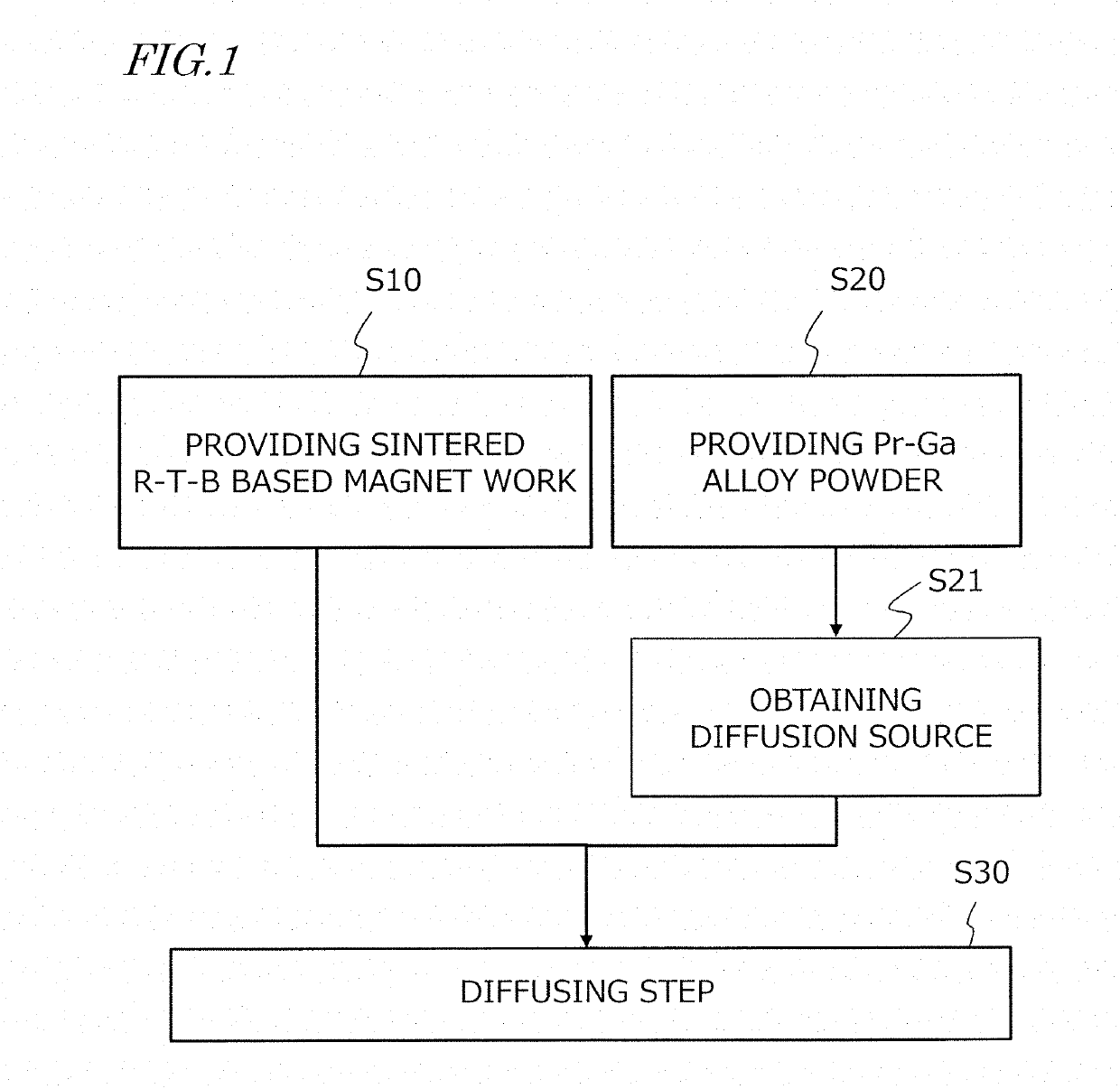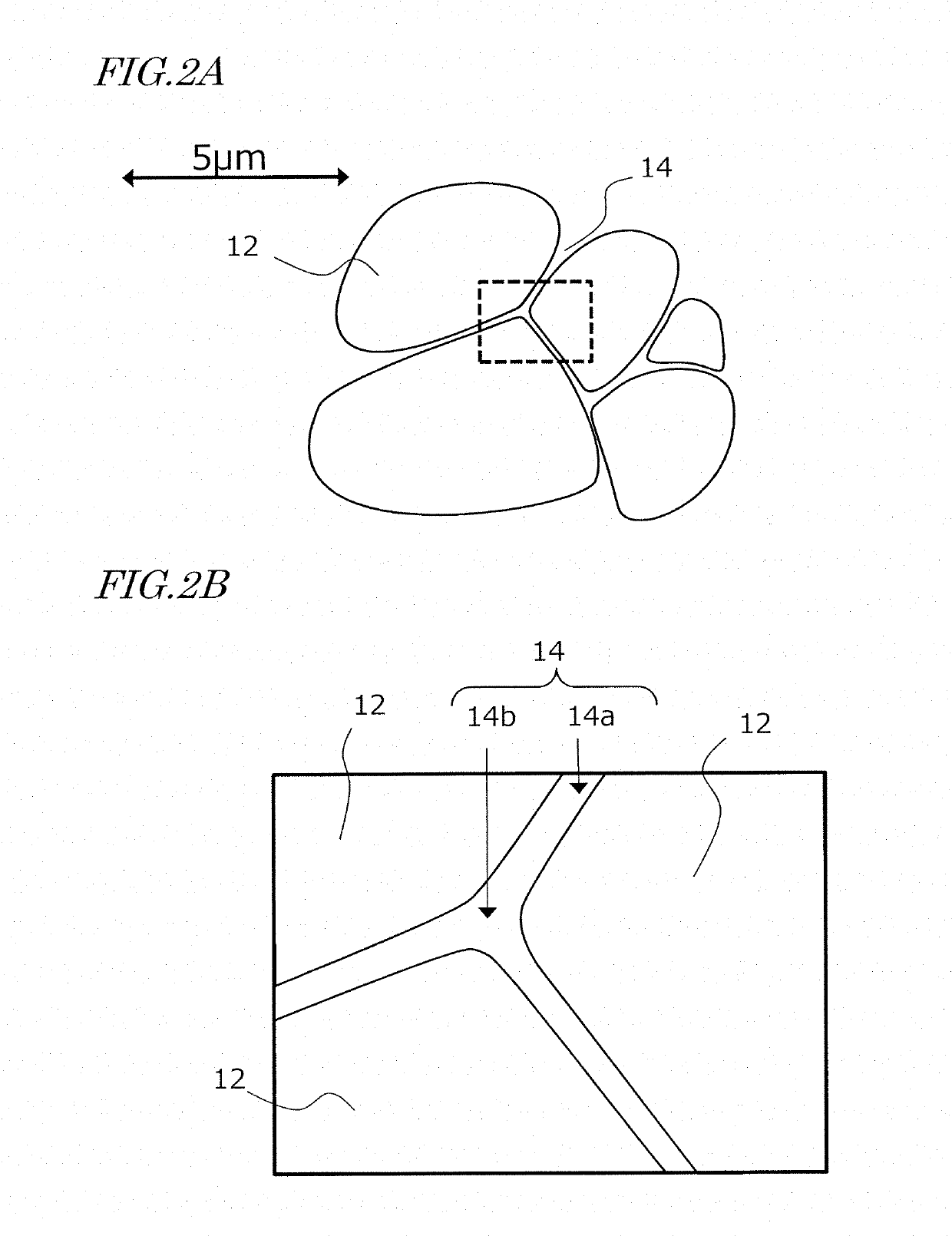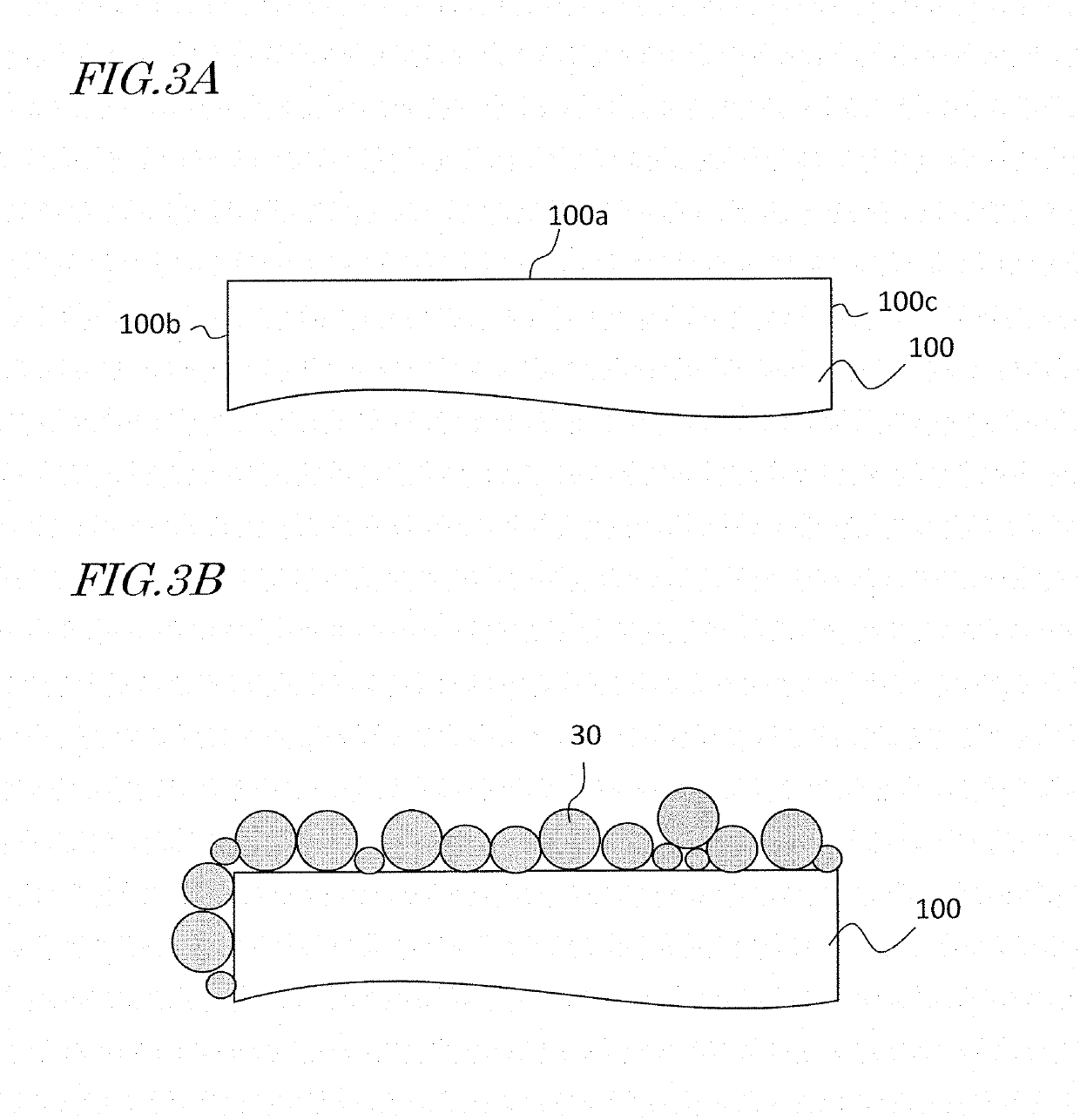Method for producing sintered r-t-b based magnet and diffusion source
a technology of r-t-b and magnet, applied in the direction of magnetic materials, magnetic bodies, transportation and packaging, etc., can solve the problems of instable supply, limited yield, and limited resource, and achieve high br, high hcj, and suppress the effect of variations in the magnetic characteristics associated with diffusion
- Summary
- Abstract
- Description
- Claims
- Application Information
AI Technical Summary
Benefits of technology
Problems solved by technology
Method used
Image
Examples
experimental example 1
[0072][Providing Sintered R-T-B Based Magnet Work]
[0073]Raw materials of respective elements were weighed in order to obtain sintered R-T-B based magnet works having compositions approximately as indicated by Nos. A-1 and A-2 in Table 1, and alloys were produced by a strip casting method. Each resultant alloy was coarse-pulverized by a hydrogen pulverizing method, thereby a obtaining coarse-pulverized powder. Next, to the resultant coarse-pulverized powder, zinc stearate was added as a lubricant in an amount of 0.04 mass % relative to 100 mass % of coarse-pulverized powder; after mixing, an airflow crusher (jet mill machine) was used to effect dry milling in a nitrogen jet, whereby a fine-pulverized powder (raw material alloy powder) with a pulverized particle size D50 of 4 μm was obtained. To the fine-pulverized powder, zinc stearate was added as a lubricant in an amount of 0.05 mass % relative to 100 mass % of fine-pulverized powder; after mixing, the fine-pulverized powder was pr...
experimental example 2
[0081]Similarly to Experimental Example 1, a sintered R-T-B based magnet work having the composition by mass ratio was produced, i.e., Nd: 24.0%, Pr: 7.0%, B: 0.86%, Cu: 0.1%, Al: 0.1%, Ga: 0.2%, Co: 0.8%, Fe: 67.0% (which satisfied inequality (1)). The dimensions of each sintered R-T-B based magnet work were: thickness 5.0 mm×width 7.5 mm×length 35 mm.
[0082]Next, Pr—Ga alloy powders of compositions as shown in Table 4 were produced by atomization. Each resultant Pr—Ga alloy powder had a particle size of 106 μm or less (as confirmed through screening). Next, under the conditions (temperature and time) shown in Table 4, each Pr—Ga alloy powder was subjected to a heat treatment (except for No. 3, which received no heat treatment), whereby diffusion sources (Nos. 3 to 17) were obtained from the alloy powders. An average crystal grain size of an intermetallic compound phase in each resultant diffusion source was measured by the following method. First, a cross section of powder particle...
PUM
| Property | Measurement | Unit |
|---|---|---|
| temperature | aaaaa | aaaaa |
| temperature | aaaaa | aaaaa |
| temperature | aaaaa | aaaaa |
Abstract
Description
Claims
Application Information
 Login to View More
Login to View More - R&D
- Intellectual Property
- Life Sciences
- Materials
- Tech Scout
- Unparalleled Data Quality
- Higher Quality Content
- 60% Fewer Hallucinations
Browse by: Latest US Patents, China's latest patents, Technical Efficacy Thesaurus, Application Domain, Technology Topic, Popular Technical Reports.
© 2025 PatSnap. All rights reserved.Legal|Privacy policy|Modern Slavery Act Transparency Statement|Sitemap|About US| Contact US: help@patsnap.com



